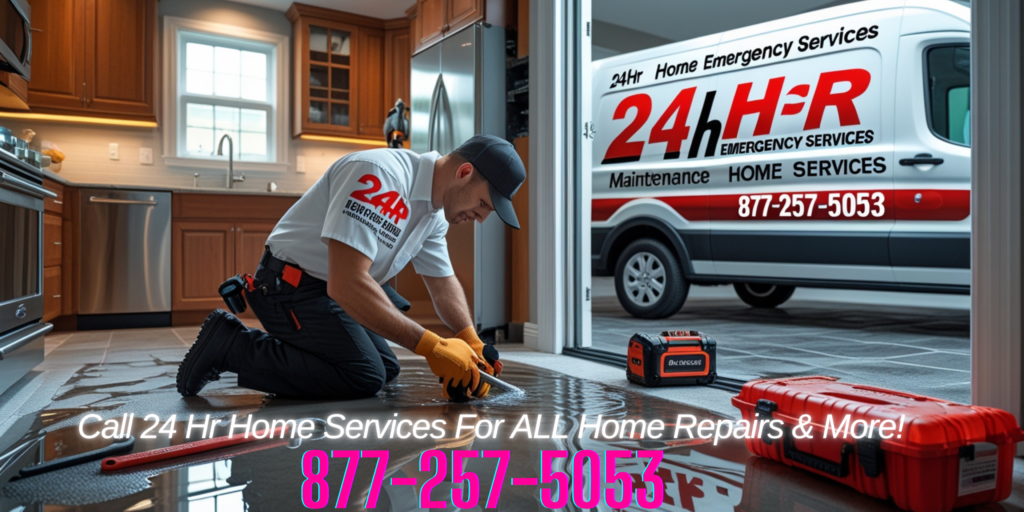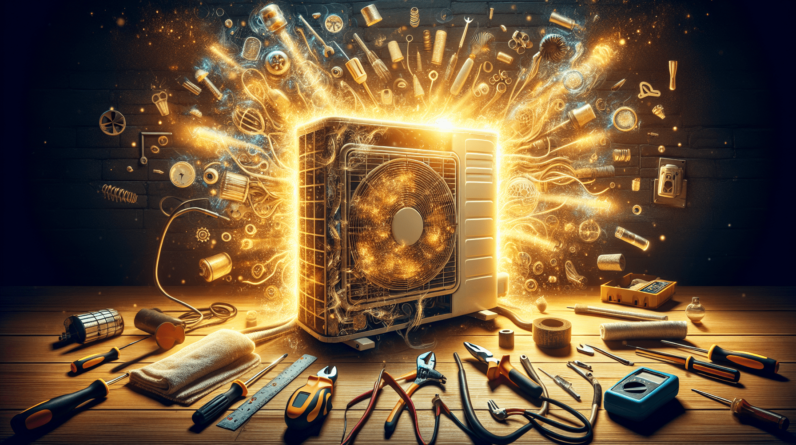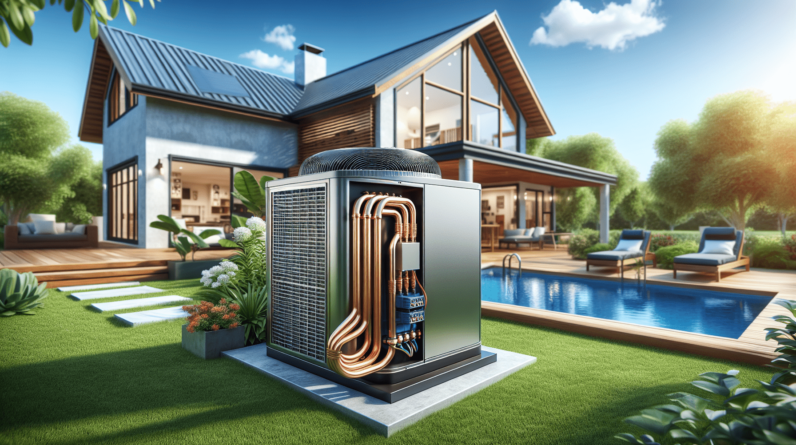
Imagine this: you’re sitting at home, the lights flickering, the TV screen glitching, and suddenly, everything goes dark. The culprit? An electric surge. We’ve all experienced it at some point, but have you ever wondered how to prevent or control such an unwelcome surge of electricity? In this article, we will explore the science behind electric surges and uncover some practical tips on how you can safeguard your appliances and electronics. So, grab a cup of tea, get comfortable, and let’s shed some light on the topic of how to control an electric surge.
Understanding Electric Surges
What is an electric surge?
An electric surge, also known as a power surge or a voltage surge, is a sudden increase in the electrical voltage flowing through your home or business’s electrical system. This surge can be caused by various factors, such as lightning strikes, power outages, or the operation of high-powered electrical equipment.
When an electric surge occurs, it can cause an excessive amount of electrical energy to flow through your wiring, outlets, and appliances. This sudden increase in voltage can damage or destroy sensitive electronics, such as computers, televisions, and kitchen appliances.
Causes of electric surges
Electric surges can be caused by a variety of factors. One common cause is lightning strikes. When lightning strikes a power line or utility pole, it can send a surge of electricity into your home or business’s electrical system.
Another cause of electric surges is power outages. When the power comes back on after an outage, there can be a surge of electricity as the electrical system is brought back online. This surge can potentially damage your electronics if they are not properly protected.
Additionally, the operation of high-powered electrical equipment, such as air conditioners or refrigerators, can cause power surges within your own electrical system. These surges can be less severe than lightning-induced surges but can still cause damage to your electronics over time.
Effects of electric surges
Electric surges can have damaging effects on your electrical infrastructure and electronic devices. When a surge occurs, it can overload your electrical circuits and cause them to trip or even catch fire in extreme cases. This can lead to costly repairs or, worse, pose a safety risk to you and your property.
Furthermore, surges can cause immediate damage to your electronic devices. Components within your appliances and electronics can be fried or damaged beyond repair. In some cases, the damage may not be immediately apparent and can lead to premature failure or reduced performance over time.
To protect your home or business from the potentially devastating effects of electric surges, it is crucial to implement proper protective measures and follow good maintenance practices.
Protective Devices to Control Electric Surges
Surge protectors
Surge protectors are devices that are designed to divert excess electrical voltage away from your devices and protect them from the damaging effects of surges. They work by detecting a surge in voltage and diverting the excess energy into grounding wires. Surge protectors are commonly used for individual devices or small clusters of electronics, such as computers or television setups.
Circuit breakers
Circuit breakers are an essential part of your home or business’s electrical system. They are designed to automatically interrupt the flow of electricity when an overloaded or short circuit condition occurs. While circuit breakers primarily protect against electrical fires and other hazards, they can also help mitigate the effects of electric surges by cutting off the power supply and preventing further damage.
Voltage regulators
Voltage regulators are devices that regulate the voltage levels flowing into your electrical system. They are particularly useful in areas where voltage fluctuations are common. By stabilizing the voltage, voltage regulators can help protect your electronics from voltage spikes and dips. They are commonly used in environments where sensitive equipment, such as medical devices or industrial machinery, needs a stable power supply.
Proper Grounding
Importance of grounding
Proper grounding is a fundamental aspect of electrical safety and surge protection. Grounding is the process of connecting electrical systems and devices to the ground or the Earth’s conductive surface. It serves multiple purposes, one of which is to provide a path of least resistance for electrical current to flow during a surge event.
Grounding helps protect against high-voltage events, such as lightning strikes, by directing the excessive energy into the ground instead of allowing it to cause damage to your electrical system or appliances. It also helps prevent electrical shock by providing a safe path for stray electrical currents to dissipate.
Types of grounding systems
There are different types of grounding systems commonly used in residential and commercial settings. The most common type is the “single-point grounding” or “earth grounding,” where a single connection is made between the electrical system and the ground.
Another type is “equipment grounding,” which involves connecting the metallic parts of equipment and appliances to the grounding system. This helps prevent electrical shocks by providing a path for stray currents and ensures that any faults in the equipment are safely discharged.
Lastly, “lightning protection grounding” is a specialized grounding system designed to protect against lightning strikes. It involves the use of lightning rods and grounding conductors to direct the electrical energy safely into the ground.
Ensuring proper grounding
To ensure proper grounding, it is important to have your electrical system inspected by a qualified electrician. They can evaluate the condition of your grounding system and make any necessary improvements or repairs.
Additionally, it is important to avoid using extension cords or adapters that eliminate the grounding prong. These can compromise the effectiveness of grounding and increase the risk of electrical surges.

Maintaining proper grounding is crucial for effective surge protection and overall electrical safety. Regular inspections and adherence to safety guidelines will help ensure that your grounding system is functioning correctly.
Protecting Sensitive Electronics
Uninterruptible power supplies (UPS)
Uninterruptible power supplies, or UPSs, are devices that provide backup power to your electronic devices in the event of a power outage. They typically contain a built-in battery that can supply power until the main power source is restored or until you can safely shut down your electronics.
UPSs not only protect against power outages but also provide protection against voltage fluctuations and surges. By ensuring a consistent and stable power supply, UPSs help safeguard sensitive electronics from potential damage.
Isolating equipment
Isolating equipment involves physically separating sensitive electronics from other electrical equipment that may generate surges or electrical noise. This can be achieved by using dedicated circuits or separate power sources for sensitive devices.
By isolating equipment, you can prevent surges caused by other equipment from affecting your sensitive electronics. This can be particularly important in industrial or commercial settings where high-powered machinery or motors may cause electrical disturbances.
Power conditioners
Power conditioners are devices that help regulate and filter the incoming electrical supply to ensure a clean and stable power source for your electronics. They are particularly useful in areas where the quality of the power supply is poor, such as locations with high electrical interference or frequent voltage fluctuations.
Power conditioners can filter out electrical noise and harmonics that may cause unwanted interference and damage to sensitive electronics. They can also provide voltage regulation to compensate for variations in the power supply, protecting your devices from potential voltage surges.
Maintenance and Upkeep
Regular inspections
Regular inspections of your electrical system are essential to identify any potential issues or areas of concern. It is recommended to have a qualified electrician perform routine inspections to check for loose connections, damaged wiring, or any signs of wear and tear.
During these inspections, the electrician may also test the effectiveness of surge protective devices, grounding systems, and other safety features. By addressing any problems or deficiencies early on, you can prevent potential surges and maintain a safe electrical environment.
Identifying and fixing faulty wiring
Faulty wiring is a common cause of electrical surges and can pose serious safety risks. Signs of faulty wiring may include flickering lights, outlets that are warm to the touch, or circuits that frequently trip.
If you suspect faulty wiring, it is crucial to address the issue promptly. This may involve replacing damaged or deteriorating wiring or hiring a professional electrician to perform the necessary repairs. By ensuring your electrical wiring is in good condition, you can reduce the risk of electrical surges and prevent potential hazards.
Updating and replacing outdated equipment
Outdated electrical equipment and appliances may be more susceptible to the damaging effects of electrical surges. Over time, advances in technology and safety standards have improved the protection provided by newer devices.
Updating your electrical equipment to meet current safety standards is essential for effective surge protection. This may involve replacing older surge protectors, circuit breakers, or voltage regulators with newer models that offer better surge protection capabilities. By staying current with technological advancements, you can better safeguard your electronics and minimize the risk of electrical surges.
Response to Electric Surges
Turning off and unplugging devices
In the event of an electric surge, it is important to quickly respond to minimize the potential damage. One of the first steps you should take is to turn off and unplug your electronic devices from the power source.
By disconnecting your devices from the electrical system, you can prevent further damage from occurring. This step is especially important if you suspect a lightning strike or a surge caused by a nearby power outage.
Isolating affected circuits
Another response to electric surges is to isolate the affected circuits. Circuit breakers in your electrical panel can be used to disconnect specific circuits that may have been affected by the surge. This can help contain the damage and prevent the surge from spreading to other parts of your electrical system.
If you are unsure which circuits have been affected, it is advisable to turn off the main circuit breaker to cut off power to the entire electrical system. This can provide temporary protection until the source of the surge is identified and addressed.
Contacting a professional electrician
In some cases, the response to an electric surge may require the expertise of a professional electrician. If you experience frequent surges, notice recurring electrical issues, or suspect damage to your electrical system, it is best to seek professional help.
A qualified electrician can assess the situation, identify the cause of the surges, and recommend appropriate measures to protect your electrical system and devices. They will have the knowledge and experience to effectively troubleshoot and address potential electrical issues.
Managing Power Transients
Power conditioning and filtering
Power conditioning and filtering systems help minimize the impact of power transients on your electrical system. They can smooth out voltage fluctuations and filter out electrical noise that may cause disturbances in your electronics.
These systems are particularly beneficial in areas with inconsistent or poor-quality power supply. By conditioning and filtering the incoming power, you can protect your devices from potential transients and reduce the risk of damage.
Surge suppressors
Surge suppressors, also known as surge limiters or surge protective devices, are designed to limit the amount of voltage that reaches your electronic devices. They act as “speed bumps” for power surges, suppressing the excess voltage and diverting it to the ground.
Surge suppressors are typically installed at various points throughout your electrical system, providing protection for specific circuits or individual devices. They are an effective tool for managing power transients and protecting sensitive electronics from potential damage.
Voltage and frequency regulation
Voltage and frequency regulation systems ensure that the power supply to your electronics remains within a safe and stable range. These systems continuously monitor the voltage and frequency levels and make adjustments as needed to maintain optimal conditions.
In areas with inconsistent power supply, voltage and frequency regulation systems can help protect your electronics from potential damage caused by excessive or insufficient voltage. By providing a stable power source, these systems minimize the risk of power transients and ensure the longevity of your devices.
Protection for Whole House
Whole-house surge protection systems
Whole-house surge protection systems offer comprehensive protection for your entire electrical system. These systems are typically installed at the main electrical panel, where they provide a first line of defense against power surges.
By intercepting and redirecting surges at the entry point of your electrical system, whole-house surge protection systems help safeguard all circuits and devices within your home or business. They provide an added layer of protection in addition to individual surge protectors and can significantly reduce the risk of damage caused by electrical surges.
Inspection and maintenance of electrical distribution panels
Regular inspection and maintenance of your electrical distribution panels are crucial for ensuring the ongoing effectiveness of surge protection measures. Faulty breakers, loose connections, or damaged components within the panels can compromise the protection offered by surge suppressors and other devices.
By scheduling routine inspections and maintenance with a qualified electrician, you can identify and address any potential issues before they escalate. This proactive approach helps maintain the integrity of your electrical distribution system and ensures the continued protection against electrical surges.
Protective measures during lightning storms
Lightning storms pose a particular risk for power surges and electrical damage. During a storm, it is important to take additional protective measures to minimize the impact of lightning strikes on your electrical system.
Installing lightning rods and grounding systems can help divert the electrical energy away from your home or business and into the ground. Bonding and equipotential planes can also be implemented to equalize electrical potential and mitigate the effects of lightning-induced surges.
Additionally, surge arresters and diverters can be installed at various points throughout your electrical system to provide further protection against lightning-induced surges. These measures, combined with whole-house surge protection systems, can significantly reduce the risk of damage caused by lightning storms.
Surge Protection for Industrial Settings
Transient voltage suppressors
Transient voltage suppressors, or TVS diodes, are commonly used in industrial settings to protect sensitive electronic equipment from power surges. These devices are designed to absorb excessive voltage and dissipate it safely. They provide quick response times and high surge withstand capabilities, making them ideal for critical applications.
Transient voltage suppressors can be installed at various points within an industrial facility to protect individual machines, control systems, or other sensitive equipment. By implementing TVS diodes strategically, industrial facilities can effectively manage power surges and ensure the uninterrupted operation of their electrical systems.
Grounding and bonding in industrial facilities
Grounding and bonding play crucial roles in ensuring the safety and reliability of electrical systems in industrial facilities. Proper grounding helps protect against electrical surges by providing a path of least resistance for excessive electrical energy.
In industrial settings, grounding systems are often more complex due to the presence of high-powered equipment and electrical systems. Bonding, which involves connecting metallic components and structures to a common ground, helps maintain electrical continuity and prevent voltage differences between different parts of the facility.
By implementing robust grounding and bonding systems, industrial facilities can reduce the risk of electrical surges and enhance the overall safety and reliability of their electrical infrastructure.
Surge protective devices in critical systems
Critical systems within industrial facilities, such as data centers, control rooms, or manufacturing lines, often require additional protection against power surges. Surge protective devices (SPDs) are commonly used in these applications to provide enhanced surge protection.
Surge protective devices installed within critical systems are typically designed with higher surge protection ratings and smaller voltage clamping levels. They are capable of withstanding larger surges and provide more stringent protection for sensitive equipment.
By incorporating surge protective devices into critical systems, industrial facilities can ensure the continuous operation of their most important equipment and protect against potential damage caused by power surges.
Preventing Power Surges from Lightning Strikes
Lightning rods and grounding systems
Lightning rods, also known as lightning conductors, are essential components for protecting structures from direct lightning strikes. They are typically installed on the highest points of buildings and other structures. Lightning rods provide a safe path for the electrical energy of a lightning strike to travel down into the grounding system.
Grounding systems associated with lightning rods consist of conductive materials buried in the ground. These systems ensure that the electrical energy from a lightning strike is safely dissipated into the ground, minimizing the risk of damage to the structure and its electrical systems.
Together, lightning rods and grounding systems help prevent power surges caused by lightning strikes and provide essential protection for buildings and their occupants.
Bonding and equipotential planes
Bonding and equipotential planes are essential components of lightning protection systems. Bonding refers to the interconnection of metallic components within a structure, while equipotential planes help equalize electrical potential between different parts of the building.
By bonding metallic components, lightning currents can be safely distributed throughout the structure, reducing the risk of damage caused by side flashes or potential differences. Equipotential planes ensure that no significant voltage differences exist between different parts of the structure during a lightning strike, minimizing the risk of electrical surges.
By incorporating bonding and equipotential planes into the design of a lightning protection system, you can effectively prevent power surges and protect your electrical infrastructure from the damaging effects of lightning strikes.
Surge arresters and diverters
Surge arresters and diverters are specialized devices used specifically for protecting electrical systems from lightning-induced surges. These devices intercept and redirect the electrical energy from lightning strikes, preventing it from entering the electrical system and causing damage.
Surge arresters are installed at various points within the electrical system, providing a line of defense against surges that may enter through power lines or other pathways. They detect the surge and divert it safely to the ground, protecting your electrical equipment and infrastructure.
Surge diverters, on the other hand, are designed to divert surges away from critical equipment and sensitive areas. They are commonly used in conjunction with surge arresters to provide additional protection for specific circuits or equipment.
By incorporating surge arresters and diverters into your lightning protection system, you can effectively prevent power surges and ensure the safety and integrity of your electrical infrastructure.
In conclusion, understanding electric surges is essential for protecting your electronics and electrical systems from potential damage. By implementing protective devices, ensuring proper grounding, protecting sensitive electronics, performing regular maintenance, and having a proper response plan in place, you can effectively control and mitigate the impact of electric surges. Whether at home, in commercial settings, or in industrial facilities, adopting these measures will help safeguard your electrical systems and provide you with peace of mind.






